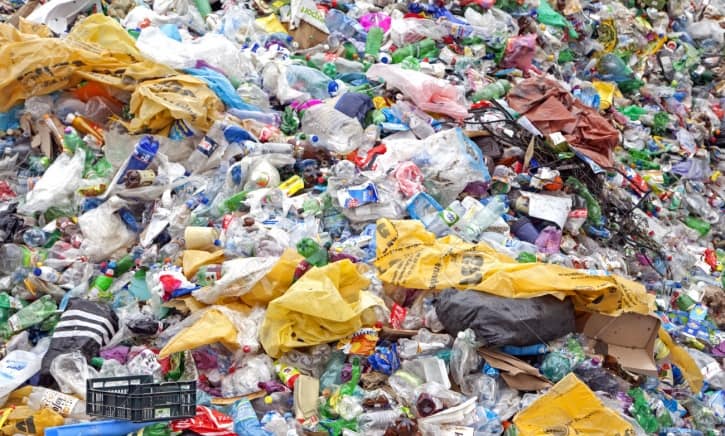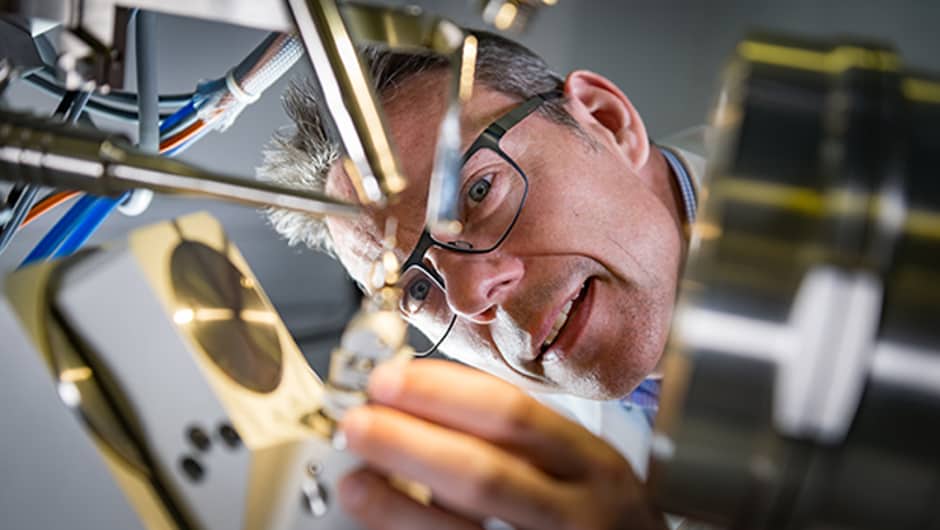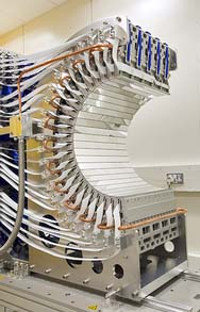
The discovery could lead to a recycling solution for the millions of tonnes of plastic bottles made of polyethylene terephthalate (PET), which will persist for hundreds of years in the environment.
The research was led by teams at the Portsmouth University and the US Department of Energy’s National Renewable Energy Laboratory (NREL) and is published in Proceedings of the National Academy of Sciences (PNAS).
Portsmouth University’s Prof John McGeehan and Dr Gregg Beckham at NREL solved the crystal structure of PETase - an enzyme that digests PET- and used this 3D information to understand how it works. During this study, they unintentionally engineered an enzyme that is even better at degrading the plastic than the one that has already evolved.
The researchers are now working on improving the enzyme so that it can be used industrially to break down plastics in a fraction of the time.
Prof McGeehan, director of the Institute of Biological and Biomedical Sciences in the School of Biological Sciences at Portsmouth, said: “We can all play a significant part in dealing with the plastic problem, but the scientific community who ultimately created these ‘wonder-materials’, must now use all the technology at their disposal to develop real solutions.”

Prof John McGeehan (CREDIT Stefan Venter, UPIX Photography)
The researchers made the breakthrough when they were examining the structure of a natural enzyme which is thought to have evolved in a waste recycling centre in Japan, allowing a bacterium to degrade plastic as a food source.
PET was patented as a plastic in the 1940s, so the team set out to determine how the enzyme evolved and if it might be possible to improve it. The goal was to determine its structure, but they ended up engineering an enzyme which was even better at breaking down PET plastics.
“Although the improvement is modest, this unanticipated discovery suggests that there is room to further improve these enzymes, moving us closer to a recycling solution for the ever-growing mountain of discarded plastics,” said Prof McGeehan.
The research team can now apply the tools of protein engineering and evolution to continue to improve it.
Portsmouth University and NREL collaborated with scientists at the Diamond Light Source. Using beamline I23, an ultra-high-resolution 3D model of the PETase enzyme was generated.

With help from the computational modelling scientists at the University of South Florida and Brazil’s University of Campinas, the team discovered that PETase looks very similar to a cutinase (an enzyme it had likely evolved from), but it has some unusual features including a more open active site cleft that is able to accommodate man-made rather than natural polymers. These differences indicated that PETase may have evolved in a PET-containing environment to enable the enzyme to degrade PET. To test that hypothesis, the researchers mutated the PETase active site to make it more like a cutinase.
The researchers found that the PETase mutant was better than the natural PETase in degrading PET. The enzyme can also degrade polyethylene furandicarboxylate (PEF), a bio-based substitute for PET plastics that is being hailed as a replacement for glass beer bottles.
Prof McGeehan said: “The engineering process is much the same as for enzymes currently being used in bio-washing detergents and in the manufacture of biofuels – the technology exists and it’s well within the possibility that in the coming years we will see an industrially viable process to turn PET and potentially other substrates like PEF, PLA, and PBS, back into their original building blocks so that they can be sustainably recycled.”




Project to investigate hybrid approach to titanium manufacturing
What is this a hybrid of? Superplastic forming tends to be performed slowly as otherwise the behaviour is the hot creep that typifies hot...